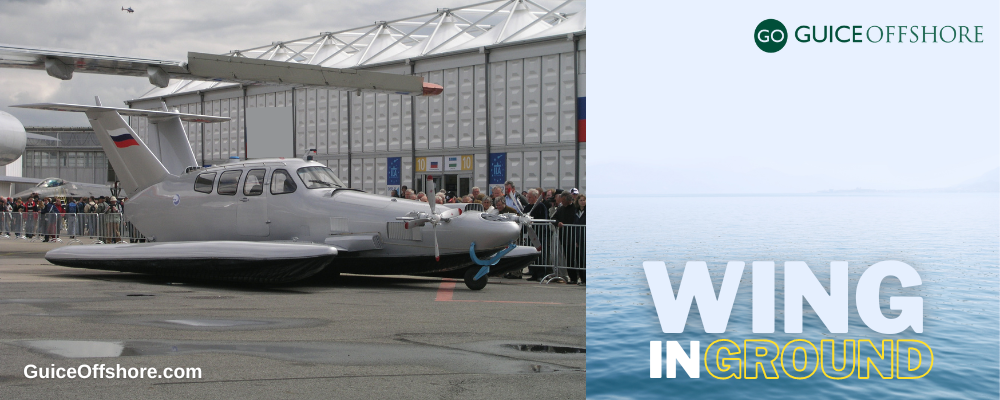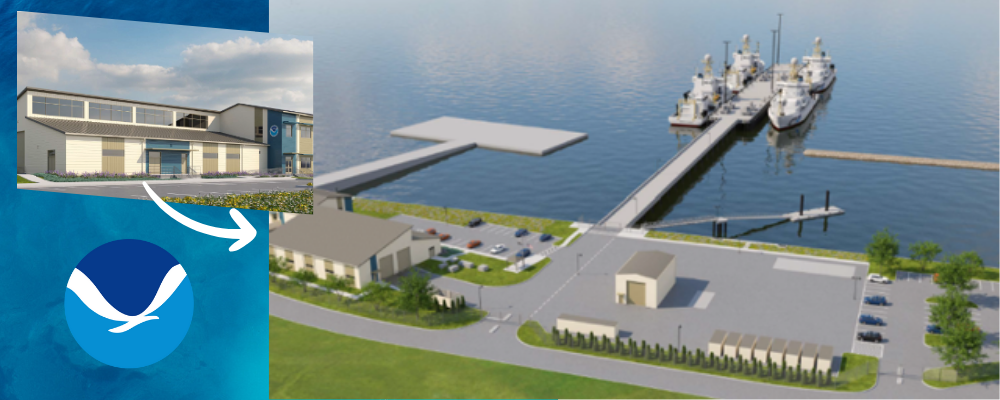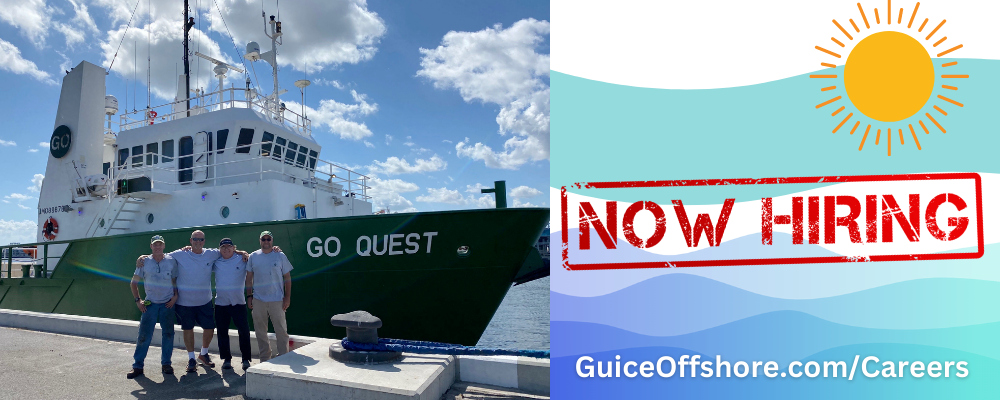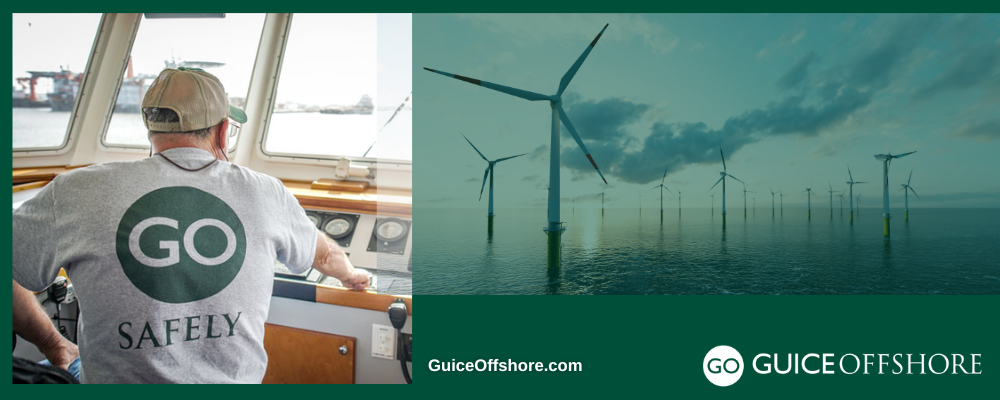- To get complete instructions on how to submit your comments, click here.
WIGs are Coming! What’s a WIG? Hint—if you work in the maritime industry, it’s NOT something you wear on your head!
As defined by federal law 46 U.S.C. 2101(54), a “Wing In Ground” (WIG) craft is “ . . . a vessel that is capable of operating completely above the surface of the water on a dynamic air cushion created by aerodynamic lift, due to the ground effect between the vessel and the water’s surface.”
But a WIG is neither a hovercraft or a sea plane.
Because WIG craft can operate very close to the surface, and because waterways provide an effective operational route for WIG craft, the law designates WIG craft as vessels, bringing them under the oversight of the U.S. Coast Guard when they are operating in the maritime domain, for which they are most suited.
Pursuant to the 2021 National Defense Authorization Act, the U.S. Coast Guard now is seeking information about the use of WIGs from the public, and particularly from offshore facility operators, including gas and oil facility operators, wind farm operators, the WIG craft community (designers, manufacturers, and operators), and persons conducting operations in airspace that may be affected by the operation of WIGs in order to develop a plan to certify and regulate WIG craft that may soon operate on U.S. waters.
In coordination with the Federal Aviation Administration (FAA), the Coast Guard is seeking to determine whether a WIG craft, carrying at least one individual, is capable of the following:
(1) Providing transportation in areas in which energy exploration, development, or production activity takes place on the Outer Continental Shelf
(2) Safely reaching helidecks or platforms located on offshore energy facilities under the WIG craft’s own power
What is a WIG?
Although WIGs have been around for decades mostly in experimental military use, the International Maritime Organization (IMO) issued guidelines for WIGs (MSC.1/Circ.1592) in 2018.
As explained by the Coast Guard and U.S. Department of Homeland Security: “A WIG craft relies on ground effect, an aerodynamic effect that creates an air cushion between the craft’s wings and the surface. When a WIG craft is operating very close to the surface and under the influence of ground effect, there is a reduction in the upwash, downwash, and wingtip vortices generated by its wing that results in a condition of improved performance. As a result of the reduced wingtip vortices, there is a reduction in induced drag. Operating within ground effect significantly improves a craft’s performance when its wing is at a height of about one-half its wingspan or less above the surface. Accordingly, a WIG craft cannot fly very far above the surface before it loses the advantage of ground effect. It may also not be able to maintain sustained flight at higher altitudes.
“When operating within ground effect, the reduced drag allows WIG craft to carry a payload with less propulsion energy than would be required by an aircraft operating out of ground effect. Operating within ground effect and not in contact with the surface also permits a WIG craft to operate at higher speeds than conventional watercraft. This makes WIG craft particularly attractive for passenger service on waterway routes.”
The IMO classifies WIGs according to the following types:
- Type A: a craft which is certified for operation only in ground effect. Within prescribed operational limitations, the structure and/or the equipment of such a craft should exclude any technical possibility to exceed the flight altitude over the maximum vertical extent of ground effect
- Type B: a craft which is certified for main operation in ground effect and to temporarily increase its altitude outside ground effect to a limited height, but not exceeding 150 m above the surface, in case of emergency and for overcoming obstacles
- Type C: a craft which is certified for the same operation as type B; and also for limited operation at altitude exceeding 150 m above the surface, in case of emergency and for overcoming obstacles
What Information is the Coast Guard Seeking on WIGs? How Do I Submit My Comments?
If you operate an offshore facility, such as in the gas and oil industry, or offshore wind, or you work in the WIG craft community (designers, manufacturers, and operators), or are a person conducting operations in airspace who may be affected by WIG operations, the Coast Guard is seeking your input on the questions below no later than November 1, 2022.
To get complete instructions on how to submit your comments, click here.
The Coast Guard encourages respondents to please provide as much detail as possible on the following questions:
(1) From offshore facility operators:
(a) What interest is there in participating in a WIG craft demonstration?
(b) What are the potential advantages, drawbacks, and concerns, cost-related or otherwise, with respect to using WIG craft for transportation support?
(c) What is the feasibility of a WIG craft to safely land and take off from a helideck (airborne mode), or to taxi up to an offshore platform (afloat mode)?
(d) What modifications to offshore platforms would be required in order to enable such operations?
(2) From the WIG craft community:
(a) What is the current state of WIG craft development, both domestic and foreign?
(b) What WIG craft are currently available, or will be available within 1 year, for an operational demonstration to an offshore platform?
(c) What are the capabilities of existing WIG craft to reach helidecks or platforms located on offshore energy facilities, and how many existing WIG craft are operational for any route, or working prototypes under test and evaluation, or designs in progress?
(d) What are the dimensions and operational characteristics of WIG craft; for example, speed, range, ground effect altitude, and passenger and cargo capacity?
(e) What are the weather and other factors that might limit WIG craft operations on exposed offshore routes?
(f) What are the costs and time estimates to manufacture WIG craft, and what resources are needed to manufacture them; for example, personnel, equipment, and raw material?
(3) In general, from both offshore facility operators and the WIG craft communities:
(a) What are the resources needed to plan and conduct a demonstration of offshore WIG craft operations?
(b) What would be the milestones and timeframe to conduct such a demonstration?
(4) Should current aircraft, airman, air carrier, and commercial operator requirements, as set forth in 49 U.S.C. and Title 14 of the Code of Federal Regulations apply to the certification and operation of WIG craft? (Note: 49 U.S.C. 40102(a)(6) defines an “aircraft” as “any contrivance invented, used, or designed to navigate, or fly in, the air.”) If current requirements should be revised, please indicate what changes would be considered necessary.
(5) Are any additional regulatory, guidance, or policy changes needed to facilitate development of a domestic WIG industry? Where appropriate, please include why the changes are necessary.
(6) What is the predicted growth and scope of the WIG craft technology in terms of its domestic deployment in industry?
(7) Regarding credentialing:
(a) Should WIG operators be required to hold a Merchant Mariner Credential with the appropriate route and tonnage limitations for the vessel?
(b) Should current airman certification requirements apply to the operation of WIG craft? If current requirements should be revised, please indicate what changes would be considered necessary ( e.g. category and class ratings, aeronautical knowledge, flight proficiency, aeronautical experience).
(c) Should WIG credentials be one endorsement that covers both the maritime and aviation aspects, or should there be individual certificates or endorsements for each aspect?
(d) Should aviation or maritime simulation training be required to obtain certification or an endorsement to conduct WIG operations?
(f) Should aeronautical experience be credited toward any service requirements to qualify for a WIG endorsement?
(g) If credit for aeronautical experience is to be given, what is the appropriate conversion of flight time to maritime service time?
(8) Finally, the Coast Guard seeks public comments on WIG craft development and technology and their potential ability to operate on coastwise and offshore routes that may not be covered in the questions above.



